From Bukom to Burton
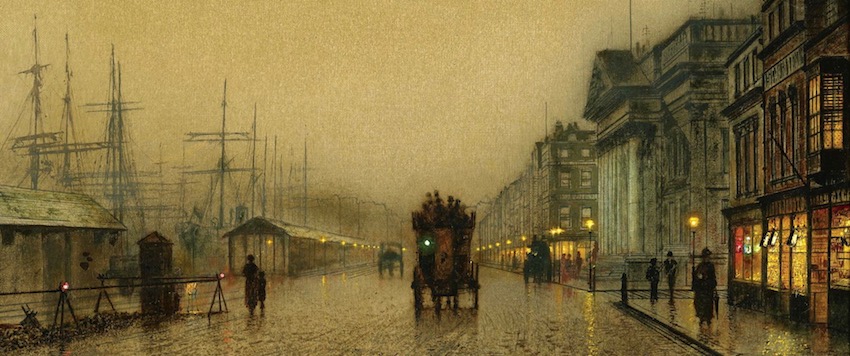
While the City of London had become the nerve centre for the world’s largest ever empire by the end of the nineteenth century, it was the City of Liverpool that was its beating heart. With five miles of docklands stretching upriver on either side of the Mersey, and over 150 ship movements per day,1 the Port of Liverpool oversaw the import of the exotic range of both raw materials and luxury goods from the colonies while at the same time exporting the manufactured products from the industrial midlands pouring in along the rail and water arteries. By the 1880s Liverpool was considered the United Kingdom’s second city, having taken the laurels from Dublin as a result of the Industrial revolution. And it was to Liverpool that twelve year old Campbell made his lonely journey after disembarking in London from his six week voyage aboard the ss Menalaus from Singapore. Campbell’s was a one way ticket. He had no means or prospect of return to his mother, Emma, and his three sisters.
With neither father nor funds to support an education he was being sent to live with his mother’s brother, John Thomas Gardiner,2 a retired Master Mariner, in Toxteth Park, near to the Liverpool docks. John Thomas had gone to live there with his young family in 1886,3 the year of Alexander’s (Campbell’s father) death and the one consolation for Campbell was that he was going to live with his five cousins.
John Thomas, Emma’s brother, had lived aboard sailing ships all his life, first with his father, John Gardiner (Campbell’s maternal grandfather), serving as a 13 year old cabin boy on sailing ships that his father captained between Greenock in Scotland and Shanghai, China. Over the next ten years as he progressively worked his way up through the ranks to First Mate he would sail with his father to all the major ports of the Far East, finally taking over as captain on John’s death in Madras in 1877. It was while docked in Port Louis, Mauritius, that John Thomas met his future wife Elizabeth and she sailed with him aboard his next command, the Moyuffu, giving birth to their first daughter Elizabeth in Moulmein, Burma in 1880, several months after Campbell was born just ninety miles away in Rangoon.
On arrival back in Mauritius, Elizabeth gave birth to another daughter, Mauritia, while John Thomas travelled to Damariscotta in Maine to supervise the construction of a 1,500 ton sailing ship, Valiant. This was to be his command for the next five years before returning to Liverpool, via New York where Elizabeth gave birth to a son, John T jnr and retiring from the sea for good taking up employment as a ships’ surveyor in 1886 at the age of 35.
Youth and Love
There are as yet no records that help describe Campbell’s time in Liverpool, except some recollections of his son (my father) David Hart. We can imagine him trudging the wet streets of Liverpool, possibly with his uncle, seeking employment in the dark and dingy maritime offices along the seafront. It appears he was taken in by a firm of solicitors where he worked as a clerk.4 By the age of twenty he was working as a shipbroker,5 acting as a middleman matching the interests of traders, commodity brokers, bankers and shipowners; experience that was to stand him in good stead in his later career.
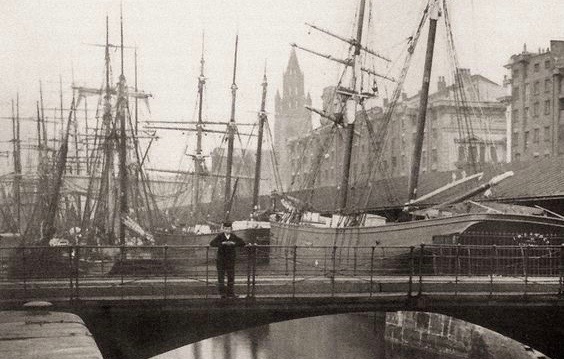
During 1998 Stephen (Clarke) visited my father David Hart while he was collecting material for accounts that he was writing of the life of his mother Féo and that of David. Following Stephen’s visit David sent him a copy of Madge’s family tree together with his own recollections of his parents’ lives. This letter is referred to as “RDCH to Stephen Clarke 28.10.98” Stephen then wrote a detailed account of both his mother’s life and also that of Campbell together with many photos and transcripts of letters. I will make all these documents available for download once I have set up the webpage.
David writes:“My father (Alexander John Campbell Hart) was sent back to England when very young, to be educated. He was looked after by maternal aunts and uncles in Liverpool named Gardiner. My mother took me to call on them when I was about 12 (ie 1928). The uncle had a Captain’s ticket in Sail. They were very kind, good people, but there was little money and my father’s education was very limited indeed. In due course he found a job as a junior clerk in a solicitor’s office. He told me that he would like to have trained as a solicitor and I am sure he would have been a good one, but there was no hope of his saving enough money to get himself articled.”
How Campbell came from Liverpool to Burton-on-Trent, an English Midlands town as far from the sea as it is possible to be, has always been something of a mystery. However it is possible that the Gardiners were on friendly terms with a retired couple living a few minutes walk away from their home in Toxteth park. These were David and Isabella Smith a Scottish couple who had retired to Liverpool after living in Burton-on-Trent for most of their lives.6
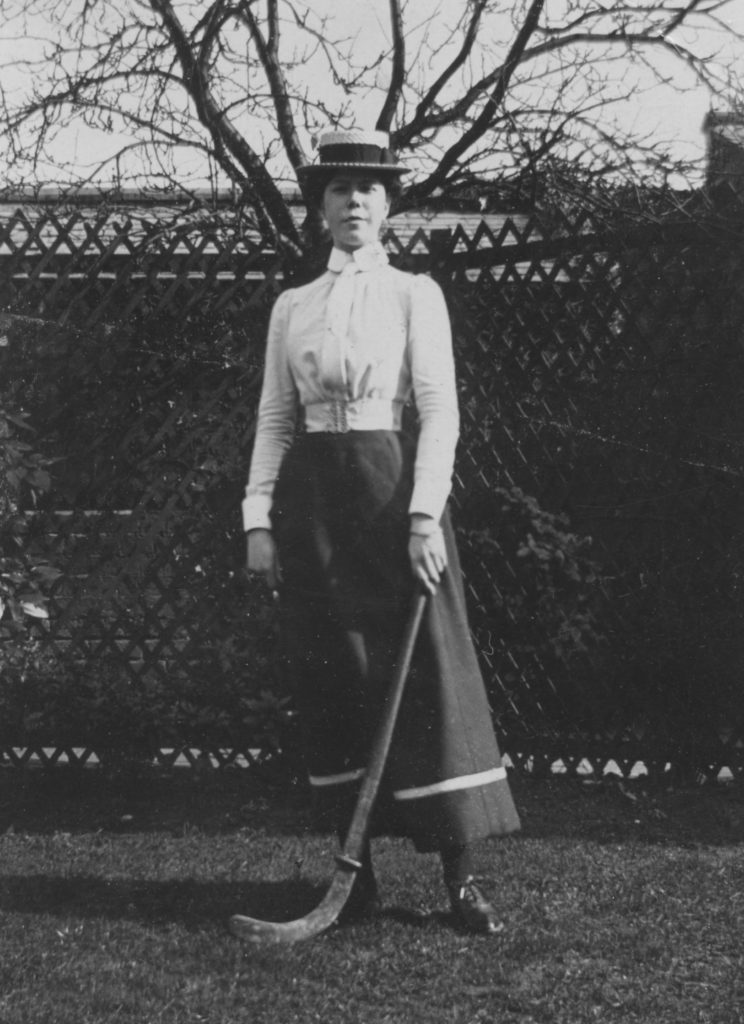
Madge Smith 1900
I speculate that during the 1890s David and Isabella would have been visited by their own son, also called David, together with his wife Elizabeth, and most likely accompanied by their attractive teenager daughter Isabella Margaret. However the introduction may have come about we do know that Campbell and Isabella, whom he called Madge, became deeply attached, and Campbell became a frequent visitor to Burton.
Whether Campbell shared Madge’s enthusiasm for hockey is doubtful however both he and Madge did both share a remarkable talent for pen and ink illustration. It is possible that this is how they met as art classes were a part of Madge’s adolescence and she derived a modest income as an Art teacher while in her twenties.4 Their later correspondence, both to David and Elizabeth and to their own children, Féo and David, is full of drawings illustrating their accounts of life in Singapore.
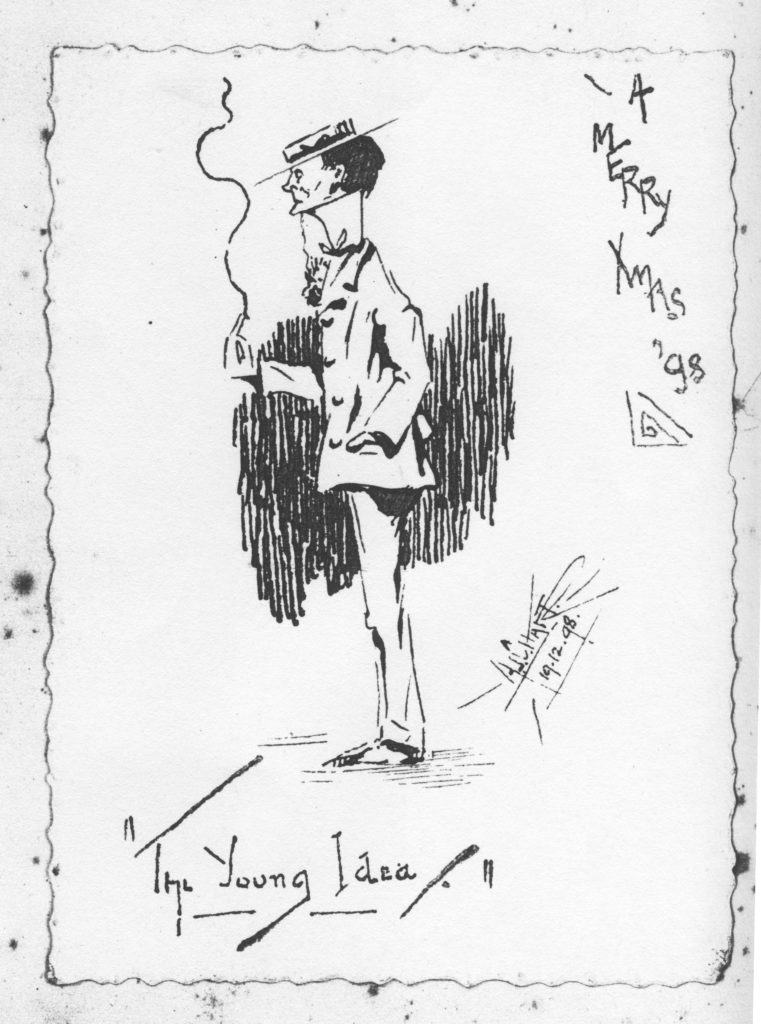

David Hart, in his letter to Stephen, continues:
“My mother (Isobel Margaret Hart – née Smith) also born in 1880 lived in Burton-on-Trent until her marriage in 1908 (1907 OH) Her parents were Scottish on both sides.
She was brought up on sound, but not rigid, Scottish principles. As a result she was a wonderful and dearly loved mother and she taught us to view the world with a proper seriousness. It needed first Gwen Leys 7 and then the Ellis-Clarke family to inject us all with a degree of wit not experienced previously, and much enjoyed.
She (my mother) had an artistic gift which was passed on to Féo. My mother earned a modest income teaching Art in Burton. In addition she had plenty of outdoor pursuits – Rowing, Bicycling and Hockey which were all unusual for young ladies in those days. She too was adventurous.
She made many friends and was good at keeping in touch with them. She loved reading and was familiar with the (English) classics……”

Horseriding was also an unusual and adventurous pursuit for a young lady – an activity which she evidently shared with Campbell, and a skill which he was to put to great use in South Africa.
Burton Water
Burton-on-Trent is set in the heart of England – in fact it is hard to find a place that is more central, more equidistant from the major centres of population or from the principal ports that serviced the island. Burton at the turn of the century had been transformed from a quiet, but prosperous market town in the early 1800s to a smog filled manufacturing boomtown. The source of the success of this industrial enterprise lay in the unique properties of the water of the river Trent that flowed past Burton’s banks. Seeping over thousands of years through the gravel and filtered through the porous sandstone and gypsum, absorbing calcium and magnesium and accumulating in vast underground aquifers, this water acquired unique properties that were to make Burton famous.
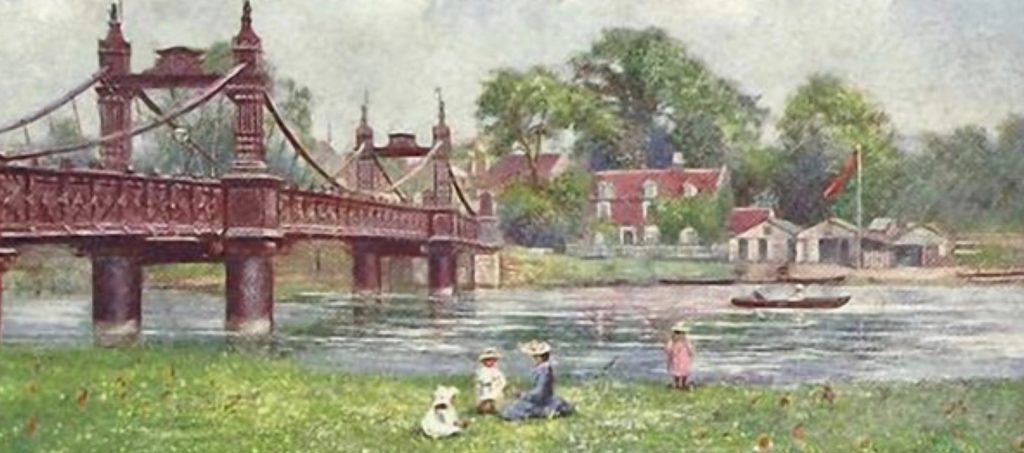
The healing qualities of these waters had been royally attested when a sickly Alfred the Great, holed up on an island in the Trent with Modwen, an Irish mystic nun, was treated by her and healed with the efficacious aqua pura . But it was as the basis for British Beer that this water was to propel Burton into becoming the brewing capital of the world.8 Home to over 50 breweries, and these were not backyard craft beers, but brewers on an industrial scale that included such household names as Worthington, Bass, Allsopp, Ind Coope, Mann and Charringtons. So wealthy and influential did the brewery owners become that many acquired titles and took up seats in the House of Lords, forming a powerful lobby group to protect their interests, inspiring one wag to term them the “Beerage”.
Much of the prosperity of the industry was as a result of the export trade to the Empire and the famous India Pale Ale was a draught especially developed for the Indian subcontinent, where it was consumed in large quantities by employees of the East India Company. It was particularly high in alcohol which helped preserve it in the heat and over the long sea journey. It is probably from this period that the expression was coined to describe someone who had gone AWOL, not expected to return, as having “gone for a Burton”.
In 1900 Burton9 it would have been hard not to work for a brewing company, so it is not surprising to find that Madge’s father, David Smith, worked in the sales department of the Wine and Spirits division of one of the major breweries. “He was also quite abstemious, very unusual in that situation and he found himself able to marry on an income of £100 per annum.”4,9
References
1 The way of a ship by Derek Lundy – a brilliant description of life aboard a square rigger in the 1880s
2 Letter RDCH to Stephen Clarke 28.10.98
3 This is the date that John qualified as a Master Mariner in Liverpool. He did not go to sea again
4 RDCH to Stephen Clarke 28.10.98
5.Army discharge paper 1901
6. 1891 Census
7. Gwen Leys – a grand daughter of Elizabeth’s uncle James who emigrated to the USA. David Hart writes: “His daughter Gwenita – Gwen Davenport – stayed with us occasionally and became a great friend of Féo’s. She was very witty and full of fun and did us all a lot of good. She wrote a best seller (in USA) called “Sitting Pretty” and they made a film of it which was a success and very funny at the time – about 1945 I think”.
8. Burton’s Brewing Heritage: The Brewery History Society
Given Burton’s location in the central midlands the export trade in ale, and indeed the national distribution of Burton beers, was enormously facilitated by the network of railways that radiated out from Burton connecting the thirsty industrial and mining towns of the Black Country with the major ports of London, Bristol and Liverpool. Many breweries operated their own private branch lines to the hub in Burton. The main lines were laid down and operated by the Midland Railway, whose chairman was a prosperous Leicester businessman, and prominent Quaker philanthropist, John Ellis MP, into whose extended family both children of Campbell and Madge, (Féo and David) would later marry.
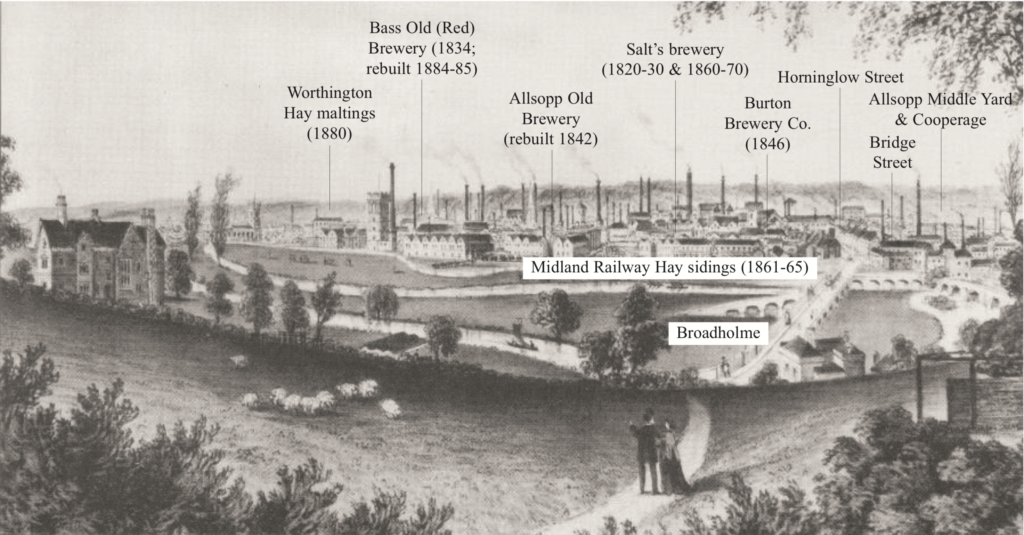
9. Historical Conversion Calculator – http://inflation.iamkate.com
£100 in 1900 equals £123,000 in 2018
Finding this all fascinating, Ol. Really enjoyable reading. Do we know what became of Campbell’s sisters at all?
Look forward to the next instalment…
Thanks Jim,
Yes we’ve a pretty good record of all three sisters living their later years in Chichester. Campbell’s half sister Winnifred died as recently as 1988 – aged 100! Campbell’s sister Daisy Emmie married and her grandson, Nigel Sidebottom, I am in touch with. I will pad out more detail of his sisters in a later post. Glad you’re enjoying it. Thanks for the feedback – I need the encouragement!